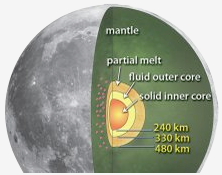 Find out from Environmental and Thermal Operating System, or ETHOS, operator Tess Caswell about the role of chemistry in making sure the astronauts aboard the space station have oxygen to breathe, water to drink, and a comfortable temperature in which to live and work. This NASA Now program is available on the NES Virtual Campus beginning Jan 25, 2012.
Find out from Environmental and Thermal Operating System, or ETHOS, operator Tess Caswell about the role of chemistry in making sure the astronauts aboard the space station have oxygen to breathe, water to drink, and a comfortable temperature in which to live and work. This NASA Now program is available on the NES Virtual Campus beginning Jan 25, 2012.
Program Preview
Link to the NES Virtual Campus home page.

 A new generation of small, smart, versatile robotic landers will aid in the exploration of airless bodies such as the moon and asteroids. The design is based on cutting-edge technology, which allows precision landing in high-risk but high-priority areas. This technology enables NASA to achieve scientific and exploration goals in previously unexplored locations.
A new generation of small, smart, versatile robotic landers will aid in the exploration of airless bodies such as the moon and asteroids. The design is based on cutting-edge technology, which allows precision landing in high-risk but high-priority areas. This technology enables NASA to achieve scientific and exploration goals in previously unexplored locations. Are you looking for an extension for the Lunar Surface Instrumentation Content Module on the NASA Explorer Schools Virtual Campus? Bring current NASA discoveries into your classroom with this article!
Are you looking for an extension for the Lunar Surface Instrumentation Content Module on the NASA Explorer Schools Virtual Campus? Bring current NASA discoveries into your classroom with this article!